Heat From Air
Water Source Heat Pumps
What is a water source heat pump?
Water source heat pumps (WSHP) use the heat energy from water to provide heating and hot water for your home. Just as with air source heat pumps, even though the water temperatures are lower than the air temperature you require in your house, a water source heat pump can extract energy from the water and turn it into heat.
There are two main WSHP designs: a closed loop system or an open loop system. Closed loop systems are used in lakes, lochs, or large ponds. Open loop systems are used with boreholes near rivers or other areas where the geological conditions are suitable.
Closed loop system.
In a closed loop system, sealed pipes filled with an anti-freeze fluid are submerged under the water. As this fluid is pumped through the pipes, it gathers heat energy in the water. This fluid is circulated back to the heat pump.
Open loop system.
Instead of using a fluid to transfer the heat through submerged, sealed pipes, an open loop system takes water from a borehole, lifting it to the surface, extracting heat energy and then returning the cooled water to a separate borehole.
However, as there is no anti-freeze, there is a potential risk that open loop system pipes could freeze as colder water leaves the heat pump. It’s therefore important that there is enough flow of water and correct sizing of the heat pump installation to ensure this does not happen.
Open loop systems move large volumes of water through the heat exchanger – higher than might be possible with a closed loop system. As a result, open loop WSHPs are often more efficient than equivalent ground or air source heat pumps. However, they also have higher operation and maintenance costs – so you need to factor this in when thinking about total running costs. Your installer should be able to offer you advice on working with either open or closed loop systems based on your specific site location.
In both systems, electricity is needed to power the compressor, but the amount of heat energy delivered to your home is more than the amount of electricity used by the system. This means that installing a heat pump could reduce your energy bills and carbon emissions.
Is a water source heat pump right for my home?
A water source heat pump can be installed in many types of homes, but there are a few things to consider when deciding whether a WSHP is right for you.
The main requirement for a closed loop WSHP is to have an appropriate body of water near your home. The water body could be a lake, loch, river, or large pond. For an open loop system, you will need space for two boreholes; your installer will assess the suitability of your site before any installation takes place.
There will need to be an appropriate route to lay underground pipes between your home and the source of water. Indoors, you will need some space for the heat pump itself and a hot water cylinder. The inside unit for the heat pump is typically the size of a large fridge.
An open loop WSHP tends to need more maintenance because the water is being pumped up from beneath the ground constantly. This means heat exchangers need protection from debris and require regular inspection and occasional cleaning to keep them in good working order. Make sure any potential installer explains this to you in detail before committing to an open loop WSHP.
Further Reading...
Your Green Future
Starts Here
Your green future
starts here...
Your Green Future
Starts Here




